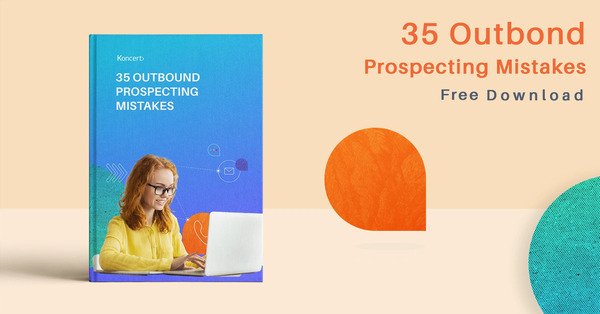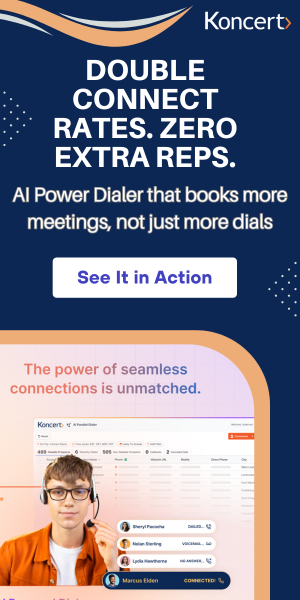
Sales organizations are refocusing their models on value-first selling rather than price-driven selling. Instead of concentrating exclusively on making a sale, sales teams are, instead, focusing on matching the product or service that will best suit the customer.
The benefits are obvious. With a value-driven sales effort, you're creating a unique relationship with your customers that, when done right, will instill loyalty to your brand.
What is sales engagement? Read this blog.
What is value-based selling?
Value-based selling is based on meeting the customer where they are in the buyer's journey. In this sales model, the sales rep acts more like a consultant rather than an order taker. He or she identifies where the customer is in the sales cycle and offers what that person needs to know to move to the next stage. Obviously, someone who is barely aware of your company requires a different approach than someone who has been interacting with your company for days or months and is ready to close the deal.
The key is showing your customer that you have an interest in their success (in solving a problem with your product or services, with choosing your product or services that best fits their needs, by coming in under budget). Sales consulting firms like Skaled are leading this movement and helping B2B business owners harness the power of value-based selling.
How to create a value-based sales process
There are several steps to creating a value-based sales process that will work well for your sales team and your customers.
1. Know your customer.
It's difficult, if not impossible to advise your customer if you don't know who your typical customer is. This is where buyer personas can be invaluable. If you haven't created one or several buyer personas for your customers, this should be your first step. A buyer persona is something like a mini bio of your typical customer, that's based on your data from your sales team.
2. Communicate first; sell later
In the value-driven sales process, it's important to resist the urge to sell at the first contact. Instead, you want to engage the sales buyer and tell them about your product and how the product can benefit them. Traditionally sales have been an almost adversarial relationship, with the salesperson trying to convince or pressure the buyer into purchasing something that's not necessarily right for them. In today's value-driven environment, both the sales rep and the buyer want the same thing, to get convinced about the product that will best suit the buyer's needs.
3. Employ sales engagement tools
Sales engagement platforms have become more and more popular in the past few years as companies shift their focus from sales-driven marketing to value drive marketing. These tools allow you to identify where the buyer is in the customer journey and react accordingly. By automating this process, you reduce the risk that someone might get forgotten along the sales cycle, since buyers move through the cycle at different paces.
Sales engagement platforms provide a single dashboard where your sales team can log all prospect contacts, track results and optimize contacts. Such platforms also help teams avoid duplicating their efforts or focusing on contacts that aren't in a position to make a purchasing decision. Sales engagement platforms best work when integrated with your existing customer relationship management software (CRM).
Some benefits of using these tools include freeing up your sales reps' time to do what they do best--interact with customers; improving your sales team's efficiency and effectiveness by helping them to work smarter, and helping your team close more sales, thus improving your company's bottom line.
4. Add value at every touch point
Don't wait until the end to tell your buyer how your product will add value to their experience. Neither do you want to tell them everything you think they ought to know right at the beginning? That will just overwhelm them, and likely they won't remember half of it. Instead, add a little nugget of information at each touch point along the sales cycle, so that they will be able to digest all of the information by the time they get ready to make their purchasing decision.
About Koncert
Koncert, provides a multi-channel sales engagement platform that integrates with leading CRMs to deliver tools for all types of sales roles and functions. Our platform has been shown to increase sales productivity by up to 800%. The Koncert platform gives sales, lead generation, and marketing teams the powerful tools they need to identify their best B2B prospects, as well as send personalized direct messages based on relevant events, facilitate and schedule sequence communication across multiple channels, and enable the sales team to provide that value added at each touch point along the sales cycle.
Our team would love to help you create a value-driven B2B sales cycle process. To learn more or to set up an appointment, visit us at koncert.com or call us at (603) 952-2500. We've been helping B2B businesses like yours excel in the digital world for more than a decade.
Related Posts
8 min read
What’s the Best Dialer for Cold Calling? Real Insights Backed by 20M+ Calls
Nov 24, 2025 by Koncert Marketing
13 min read
Stop Wasting Dials: How Ultra-Low Latency AI Dialing & Real-Time Data Enrichment Deliver 10X Connect Rates
Oct 30, 2025 by Koncert Marketing



